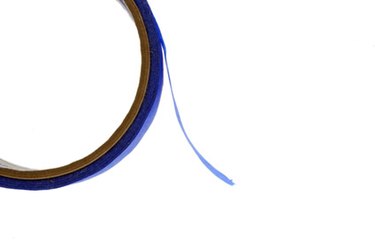Things You'll Need
Trisodium phosphate cleanser
Steel wool
Water hose
Masking paper
Plastic coverings
Professional painter's tape
Heavy-duty fabric drop cloths
Galvanized metal etching spray primer
Oil-based spray enamel
Oil-based high temperature spray enamel

If you would like to paint a stainless steel exhaust, there are some critical points you should understand before you begin the application process. Stainless steel is a nonporous, durable surface, ill-suited for paint adhesion. If you apply paint directly over under-prepared stainless steel, you will end up with rapid paint failure. You must condition the exhaust with a special aesthetic primer, capable of etching steel surfaces. You must also select a paint that will remain durable over a long period of time.
Step 1
Ensure that the exhaust is cool.
Video of the Day
Step 2
Clean the stainless steel exhaust with a trisodium phosphate cleanser, using steel wool. Rinse the exhaust, using a water hose. Wait 2 to 4 hours for the exhaust to dry.
Step 3
Cover areas you do not want painted with masking paper, plastic coverings and painter's tape. Protect the surface beneath the exhaust with heavy-duty drop cloths.
Step 4
Coat the clean stainless steel exhaust with galvanized metal etching spray primer. Hold the can of etching primer 8 inches from the exhaust as you apply. Wait six hours for the primed exhaust to dry.
Step 5
Coat the primed exhaust with oil-based spray enamel. Hold the can of enamel 8 inches from the exhaust as you apply. Wait six hours for the enamel to dry.
Tip
Use an oil-based high temperature spray enamel on exhausts that raise in temperature.
Warning
Never apply etching primer directly over a dirty exhaust or you will have problems with adhesion.
Do not apply enamel directly over an unprimed exhaust or the finish will chip.
Do not use ordinary acrylic, latex or oil-based primer on stainless steel exhausts or the finish will peel.
Video of the Day